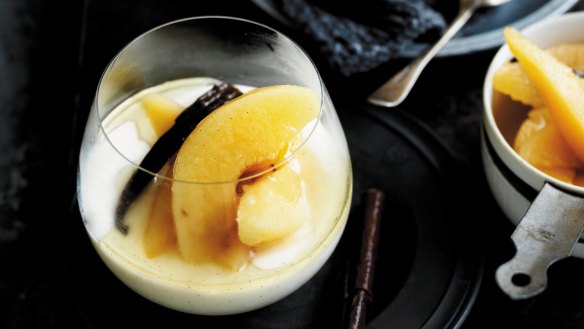Vanilla: Everything you need to know

What is it?
Vanilla is the blanched, fermented, dried and cured "bean" of a climbing tropical orchid. The process, mostly done by hand in countries such as Madagascar and islands of the South Pacific, helps liberate and create more than 150 aromatic compounds.
This is why real, well-handled vanilla tastes so good and is so expensive, fetching about $300 a kilogram. The cured beans are sold whole and used to make paste, extract and other cooking products.
Vanilla extract is made by soaking the beans in alcohol. And as demand has long outstripped production, fake vanilla, known as vanilla essence, has been made since the 1870s, when scientists synthesised the characteristic flavour molecule vanillin from wood.
(Oak contains vanillin, which is why some wines aged in oak barrels have a vanilla note – think 1990s chardonnay.)
Why do we love it?
Smelling the aroma of real vanilla is like running after a car that's driving away – as hard as you try, you can never quite catch it. It smells of wood, cedar or cypress, honey, hay and saffron, with an overwhelming association with sweetness.
It is often one of the first flavourings we use when we start cooking, perhaps splashing vanilla essence into the creme patisserie when making vanilla slice with grandma or adding whole vanilla beans when poaching pears for our first dinner party dessert.
Its link to pleasant childhood memories evokes emotions of security. The scent of vanilla has even been shown to reduce anxiety in some people.
Who uses it?
Andrea Reiss, founder of Chez Dre and Bibelot bakeries in South Melbourne, uses organic vanilla beans from Papua New Guinea to make her Real Vanilla ice-cream at Woodend Ice Cream Co. The aromatic compounds in the vanilla are soluble in both water and fat, so a rich ice-cream base is an ideal liquid in which to steep the beans.
"We make a hot infusion with the beans in the milk and cream," says Reiss. When cool, she squeezes the caramel-coloured liquid from the beans into the milk and cream. The seeds are scraped into the liquid when it is cold to avoid extracting too much of the woody aroma.
Sydney cookbook author and publisher Jane Lawson (Milkbar Memories, Snowflakes and Schnapps) says vanilla loves coffee, nuts, caramel and coconut and takes the sharp edge off a dish so a little vanilla extract added with the eggs to a lemon tart will make the flavour more rounded.
How do you use it?
Vanilla can be used in both sweet and savoury dishes. Lawson recommends using top-of-the-range extract in dishes where vanilla is the foreground aroma but less costly, yet still good quality, vanilla extract when it is a background note. Neither recommends imitation vanilla.
To use a vanilla bean, cut it in half lengthwise with a sharp knife and scrape the tiny black seeds into the dish with the point of the knife. A good bean should be dark, shiny and leathery to the touch but still supple enough to bend around your finger. A little salt used with vanilla will bring out more of the sweet aromas.
In France, vanilla is often paired with seafood, where it highlights the natural sweetness and adds a hint of mystery. Try adding a tiny scraping of seeds to a honey marinade for quail, a few drops of quality essence alongside smoky paprika for a pork rib rub, or a smidge of paste to a prawn and coconut curry.
Where do you get it?
Baking brand Queen makes a range of acceptable extracts and pastes that are available in supermarkets. Look for high-quality Tongan-grown Heilala Vanilla products in food stores, supermarkets and online. The Australian vanilla harvest in under way and new season vanilla beans and products will be ready shortly. Try brokennosevanilla.com.au and vanilladreams.com.au.
After more than 10 years of answering readers' vexing culinary questions, Richard Cornish has turned his focus to ingredients. Suggest an ingredient via email to brainfood@richardcornish.com.au or tweet to @foodcornish.
Appears in these collections
More:
From our partners
Original URL: https://www.smh.com.au/goodfood/vanilla-everything-you-need-to-know-20210630-h1wtzm.html
